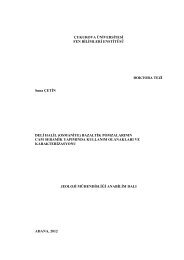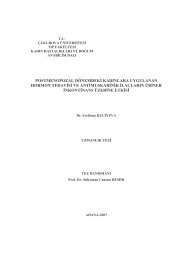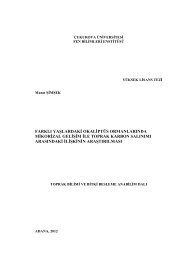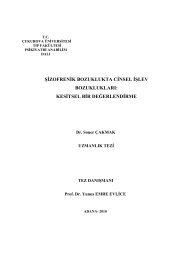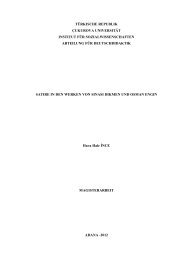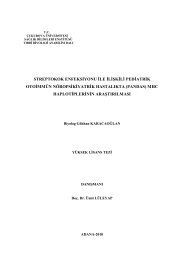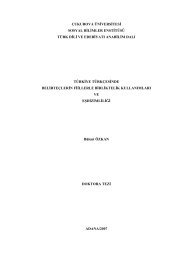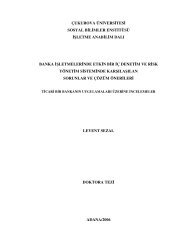ÇUKUROVA UNIVERSITY INSTITUTE OF NATURAL AND APPLIED ...
ÇUKUROVA UNIVERSITY INSTITUTE OF NATURAL AND APPLIED ...
ÇUKUROVA UNIVERSITY INSTITUTE OF NATURAL AND APPLIED ...
You also want an ePaper? Increase the reach of your titles
YUMPU automatically turns print PDFs into web optimized ePapers that Google loves.
4. MODELING <strong>OF</strong> PROPOSED DVR Mustafa İNCİ<br />
• The synchronized fundamental component,<br />
• The amplitude, A (t)<br />
, of y (t)<br />
• The phase angle θ (t)<br />
, of y (t)<br />
.<br />
• The frequency deviation, ∆ ω (t)<br />
;<br />
• Time-derivatives of the amplitude, phase and frequency.<br />
The error signal e(t)=u(t)-y(t) is the total distortion signal of the input and it<br />
can be expressed as a continuous time (Teke et al., 2011).<br />
∫<br />
e ( t ) = u ( t ) − sinθ<br />
( t ) e ( t ).sinθ<br />
( t ). K . A<br />
dt<br />
(4.24)<br />
Here, and , located at the right hand side of (1), are assumed as a<br />
constant due to the value at the instant t that is equal to that of the instance (t-1).<br />
Hence, the final statement of (4.24) is given as<br />
∫<br />
e ( t ) = u ( t ) − sinθ<br />
( t − 1) e ( t − 1).sinθ<br />
( t − 1). K . A<br />
dt<br />
(4.25)<br />
Considering that e(t-1) and sin(t-1) are constant, then<br />
∫<br />
e ( t)<br />
= u ( t)<br />
− e ( t −1)<br />
sin<br />
2 θ ( t −1).<br />
K dt<br />
(4.26)<br />
A<br />
If the constants are assumed as<br />
sin θ ( t −1)<br />
= µ<br />
(4.27)<br />
1<br />
2<br />
( µ<br />
1<br />
) . K<br />
A 2<br />
e (4.28)<br />
2<br />
( t −1)<br />
sin<br />
θ ( t −1).<br />
K<br />
A<br />
= e ( t −1)<br />
= µ<br />
62



